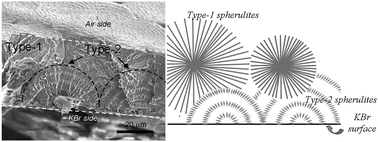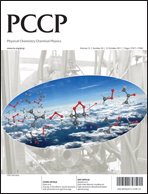Surface and interior views on origins of two types of banded spherulites in poly(nonamethylene terephthalate)
Abstract
Top-surface and three-dimensional views of Type-1 and Type-2 of ring-banded spherulites in poly(nonamethylene terephthalate) (PNT) in thicker bulk crystallized on a nucleating potassium bromide (KBr) substrate were examined using various


 Please wait while we load your content...
Please wait while we load your content...